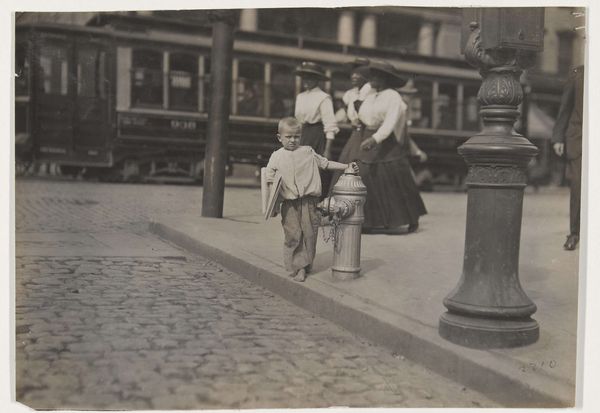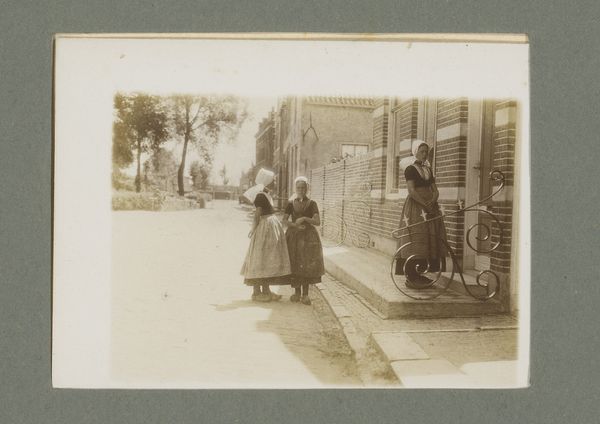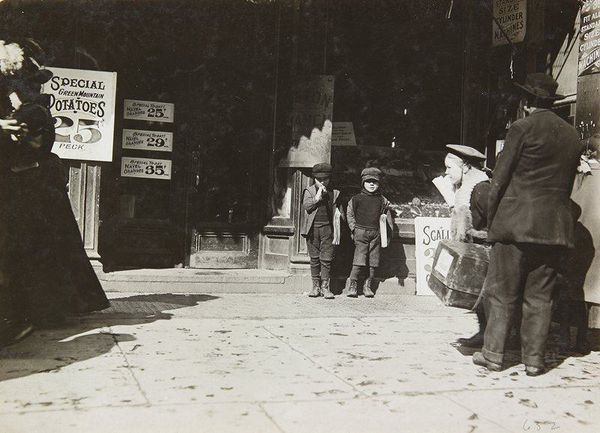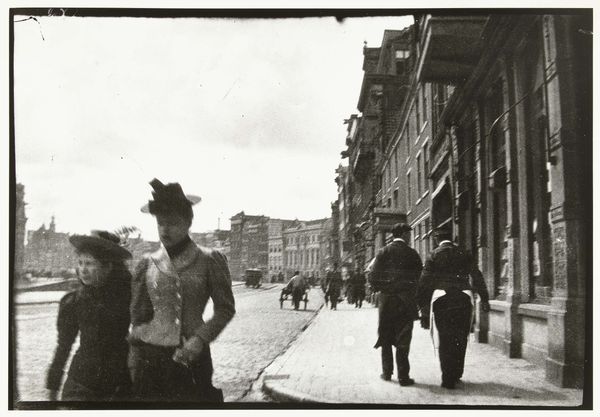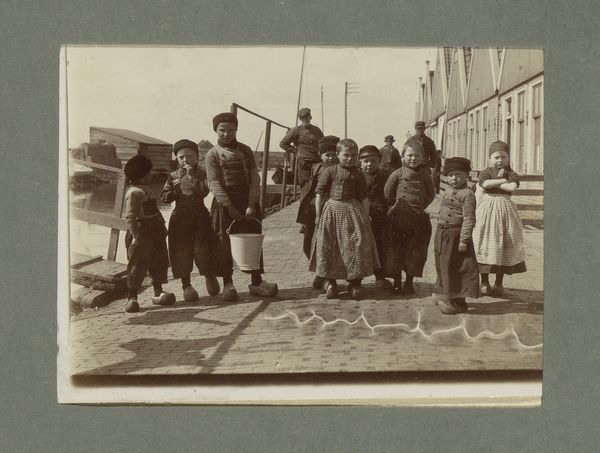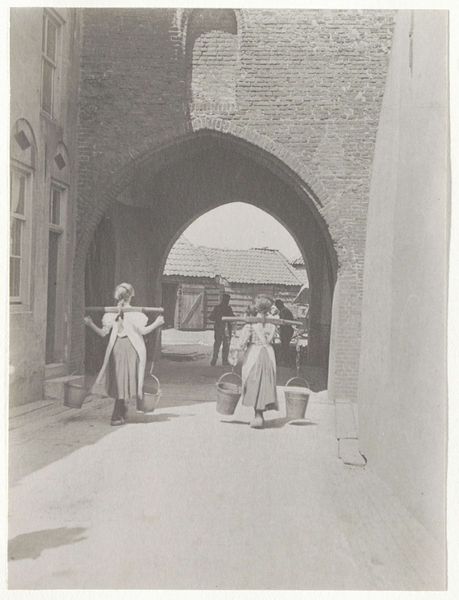
Dimensions: 4 5/8 x 6 9/16 in. (11.75 x 16.67 cm) (image, sheet)
Copyright: No Copyright - United States
Editor: Here we have Lewis Hine's "Untitled" photograph from 1909, a gelatin-silver print. What immediately strikes me is the starkness of the setting and the girls gathered here, giving me an impression of urban isolation. What do you see in this piece? Curator: The architectural elements really frame them. The archway acts as a liminal space. They seem to be caught between worlds, doesn't it feel like that? Not fully outside, not fully inside. It makes one consider the transitional stage of childhood these girls inhabit. Editor: Absolutely, that resonates! What about the girls' postures? Curator: Look at the symbolism: they’re in proximity but almost averted. They're sharing a common reality. Yet, one is embracing another in tenderness. Consider Hine’s broader project as a social documentarian, what symbolic message is revealed with these children? Editor: He was photographing child labor, wasn’t he? It's disheartening to see innocence possibly linked with exploitation here. The building, looming, possibly symbolizes industrial forces? Curator: Precisely! Hine consistently utilized photographic imagery to trigger reform and recognition of child welfare, focusing attention on the social challenges that marginalized youth encountered during the early 20th century. Editor: Understanding Hine's mission really changes how I view this image, turning it from a simple scene into a powerful commentary. Curator: Yes, isn’t it amazing to contemplate how photographs serve as historical mirrors reflecting both societal challenges and shifts in our moral compass? It carries a deep emotional memory and a sense of urgency for a more compassionate society.
Comments
minneapolisinstituteofart almost 2 years ago
⋮
Lewis Hine was a documentary photographer, educator, and social reformer. Trained in sociology, Hine taught at the progressive Ethical Culture School in New York City before turning his attention to photography. As a photographer for the National Child Labor Committee (NCLC), Hine traveled the United States to document children in unsafe working conditions in factories, mines, fields, and city streets. Over ten years, he created an indelible record of the human cost of an exploitative labor market, documenting the tired faces of children at the end of their shifts, or even children mutilated by industrial machinery. These disturbing photographs were used in publications and presentations created by Hine and the NCLC, and ultimately promoted sweeping policy changes designed to protect children.
Join the conversation
Join millions of artists and users on Artera today and experience the ultimate creative platform.

